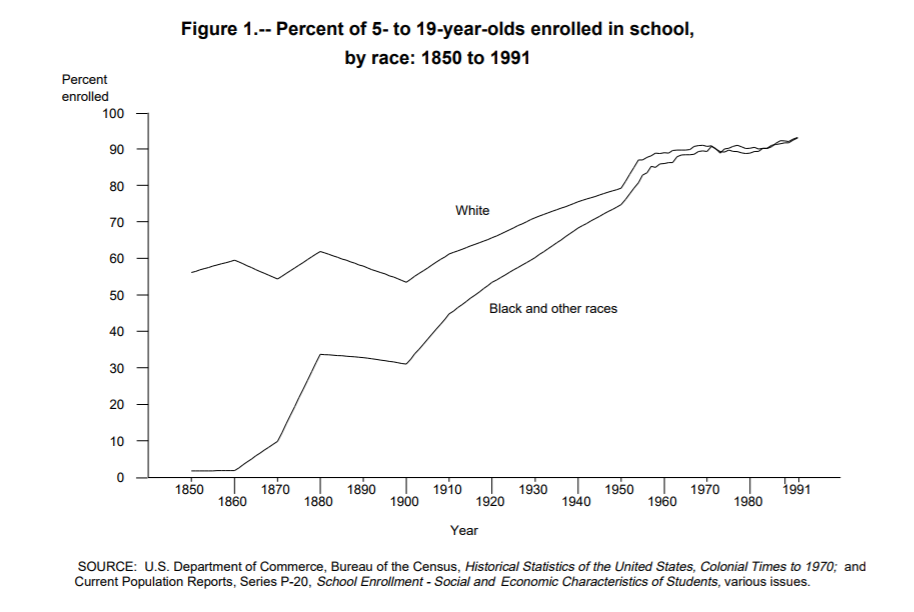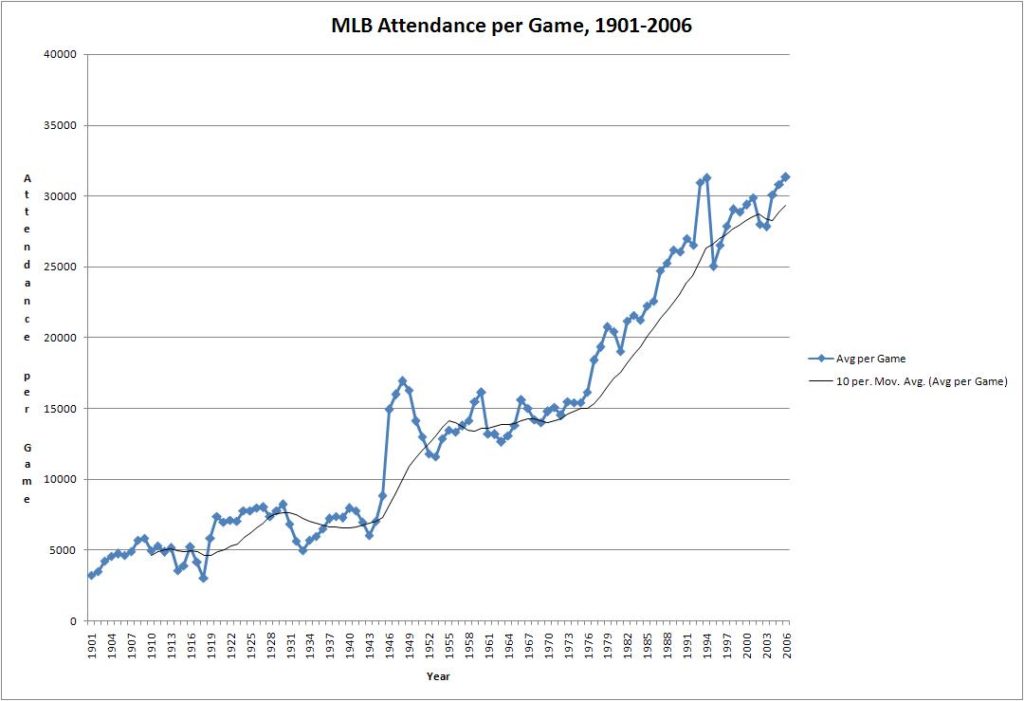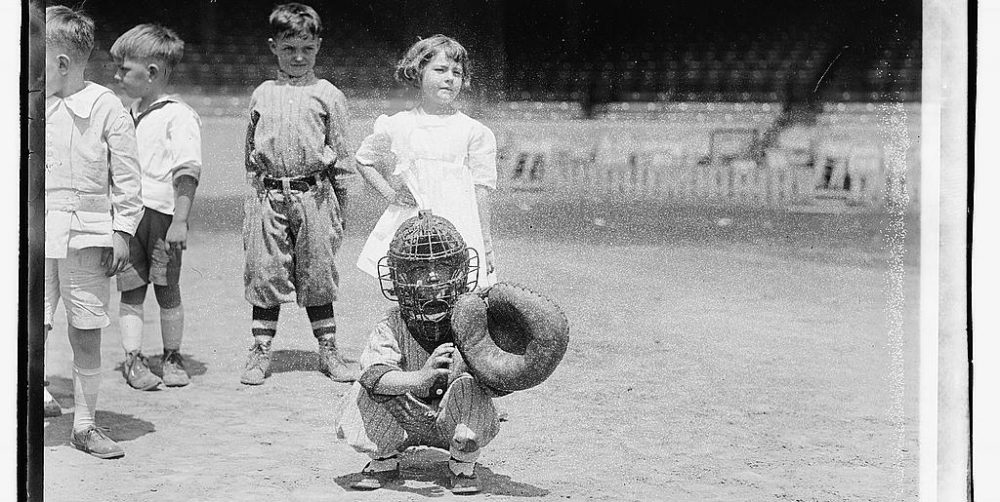The data compiled throughout my research reveals baseball’s sphere of influence in early 20th century America reaches far beyond the boundaries of the sports world. The professionalization of baseball and its integration into American youth drastically affected the construction of American childhood, with children’s experience equally dependent on both their identity in society, and where they were geographically located (with both factors equally impacting one another). To examine the various conceptions of childhood and how they have progressed through early 20th century, I have broken down and analyzed them through 4 important themes of childhood.
Building a National Identity
Baseball’s rise to national acclaim during the early 20th coincided with dramatic shifts in ideologies about the concept of childhood. For one, recreation for children was considered not only a biological need, but a source of social, ethical, and psychological benefits for them. Second, America became obsessed with physical strength and masculinity in children. In 1903, New York City’s Public School Athletic League for boys was established, creating formal spaces run by adults for boys to stay occupied with school related sports. Following their establishment, boys clubs saw a huge increase in cities across America, creating spaces children could freely interact with each other under adult supervision. This shift positively affected children’s life, stressing an importance to balance school and work correspondingly with leisure in their daily schedule. School sponsored baseball programs proved extremely effective as a pull force for children to stay involved in school systems, show in the graph provided below:

https://nces.ed.gov/pubs93/93442.pdf
Simultaneously, the professionalization and regulation of baseball allowed adults to use the game as a medium to ingrain prevailing power relations and ideologies to preserve a national identity onto children, particularly the white, upper-class male. This figure was perpetuated throughout the U.S. by professional baseball leagues, which intentionally excluded women, people of color, and minority races.
Social Inequalities
The white masculine hero fetishized by professional baseball as means to promote a national identity was quite problematic. The map provided displays a trend by which major powers of baseball have been systematically setup in places with almost no black or minority population.

Analyzing census data with professional baseball team headquarters, this maps exemplifies the racialized Geography of 20th century American Baseball through the apparent systematic placement of all major baseball teams in areas 91% or over white, with Maryland being the only state to be lower, ranking in at 86% white. https://babel.hathitrust.org/cgi/pt?id=mdp.39015066016554;view=1up;seq=9
While baseball seemingly brought the nation together to enjoy during this era, the sport reflected dominant racial, sexist, and classits ideologies of the time, perpetuating these ideaologies onto children through these categories. The formation of the National Baseball League created an upper class, white, masculine national identity for white children to emulate. Baseball legends such as Babe Ruth and Ty Cobb were gods to children and teams hiring bat boys allowed children to be closer to their idols than ever before. However, the National Baseball League excluded girls, people of color, and poor people from participating. Although professional baseball blatantly pushed a racist, sexist, and intolerant agenda, I found that children belonging to these discriminated groups did not suffer, but did quite the opposite. Exclusion from white baseball only worked as a cohesive agent for marginalized groups to band together and reinvent the sport itself as their own, bringing communities closer together, improving economics, and creating new landscapes children could participate in. Countless negro leagues popped up across the South producing legendary figures such as Jackie Robinson who paved the way for establishing colored children’s baseball spaces as a means of fun and civil rights. Native Americans saw competitive benefits from using their language, seeing baseball as an “avenue of cultural continuance in a dramatically altered world”(Laliberte, 2013). Poor children who could not afford or access proper equipment and play spaces reconstructed spaces as their very own baseball fields, whether that be a deserted field or the middle of the street. In poor neighborhoods these games most often consisted of children of different races. With baseball’s growing popularity creating an American culture synonymous with sports, one of the first and largest movements for women and girls to equally participate in sports arose. This movement provided a mentality that “All of the biological, mental, social and moral benefits of athletic games are as much needed by girls as by boys” (Frost & Wardlaw, 1920).
This storymap provides a brief collection of milestones in American social justice achieved through baseball.
This picture shows how children’s role as actice participants within baseball allowed them to define who they were and what childhood was in society. Poor children, of mixed race, all come together in a urban neighborhood street to play baseball with what minimal equipment they had. Every stereotype of what the “ideal” child should by instilled by adults in broken in this single picture:

Taken in 1950 Brooklyn, black and while children gather near a kosher market to play stickball. Photo by Arthur Lepzig https://ephemeralnewyork.files.wordpress.com/2009/06/stickballbrooklyn2.jpg
Material Cultures of Childhood and Youth
Baseball provided a brand new opportunity for children to create their own material culture for the first time. No matter what demographic, baseball was accessible to all children, and each demographic began reinventing the game with their own culture. Upper class children were able to afford new equipment and sports jerseys for play on nice baseball fields. Poor children who could not afford these things took to the streets to play baseball with whatever they had, using a stick for a bat, ripped balls, and pieces of trash for bases. Professional baseball and the construction of stadiums provided children a new form of entertainment. Children now had the ability to participate in a culture that allowed them to have fun and benefited their well being, both as participants and players. Shown in the graph below, a rise in MLB attendance directly correlates with the introduction of baseball leagues for young boys.

MLB Attendance Rates from 1901 to 2006. MLB’s highest attendance increase occurred between 1940-1948, exactly the same years Minor League Baseball started and rose to national acclaim. Provided by http://www.baseballmusings.com/archives/AttendTrend-thumb.JPG
Additionally, adults began to see how beneficial baseball was solely for the well being of children, rather than for instilling ideologies. Thus, we see a shift from school sponsored/pay to play leagues, towards the development of what would be Little League Baseball, a league created for kids and kids alone. A league where childhood could remain for children. I have provided a timeline which follows the development of boys leagues leading up to the creation of Little League Baseball.
Save
Save
